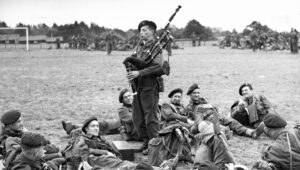This war was called “The Great War” and “The War to End all Wars” in retrospect.
New technologies delivered death on an unheard-of scale just years before.
The airplane, machine gun, tanks, and poison gas made killing easier and faster.
The accuracy of existing weapons such as rifles and cannons was sharpened as well.
Armies faced off against each other from protective trenches dug in the ground, the land in between was called “no man’s land” for good reason.
Constant shelling and bombardment made recovering the dead impossible.
Poppies were a common sight, especially on the Western Front. They flourished in the soil churned up by the fighting and shelling. The flower provided Canadian doctor John McCrae with inspiration for his poem ‘In Flanders Fields’, which he wrote whilst serving in Ypres in 1915.
In Flanders fields the poppies blow
Between the crosses, row on row,
That marks our place: and in the sky
The larks still bravely singing fly
Scarce was heard amid the guns below.
We are the dead: Short days ago,
We lived, felt dawn, saw sunset glow,
Loved and were loved: and now we lie
In Flanders fields!
Take up our quarrel with the foe
To you, from failing hands, we throw
The torch: be yours to hold it high
If ye break faith with us who die,
We shall not sleep, though poppies grow
In Flanders fields
A paper poppy was eventually adopted by the British and Canadian Legions as the symbol of remembrance of World War One and a means of raising funds for disabled veterans.
An American war volunteer, Moina Michael, helped establish the symbol in the US where the Veterans of Foreign Wars and the American Legion also embraced the Red Paper Poppy tradition. The America Legion celebrates National Poppy Day on May 25th. It is strongly linked with Armistice Day in the UK (11 November)
A red paper poppy, that is sold on both sides of the Atlantic Ocean in remembrance





